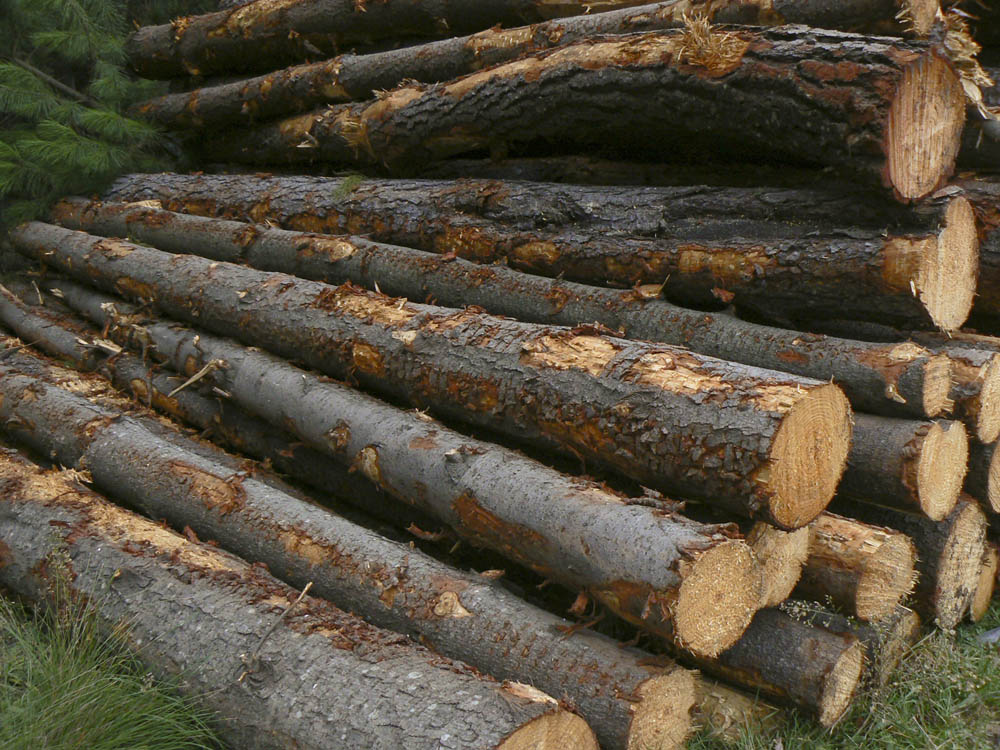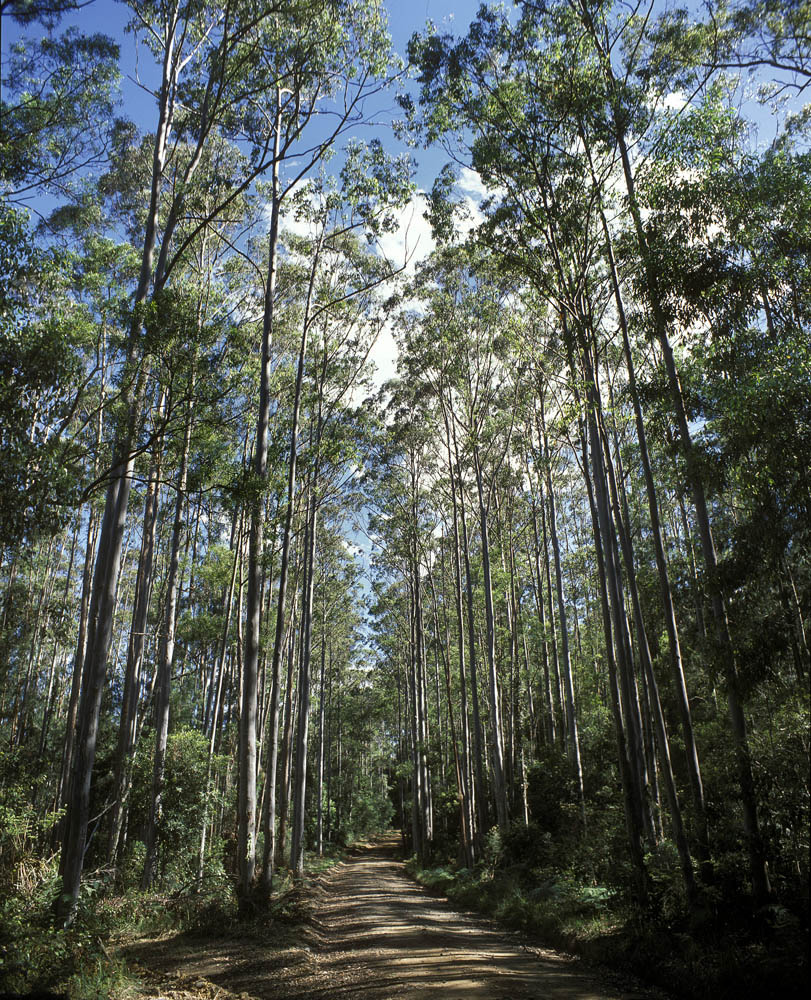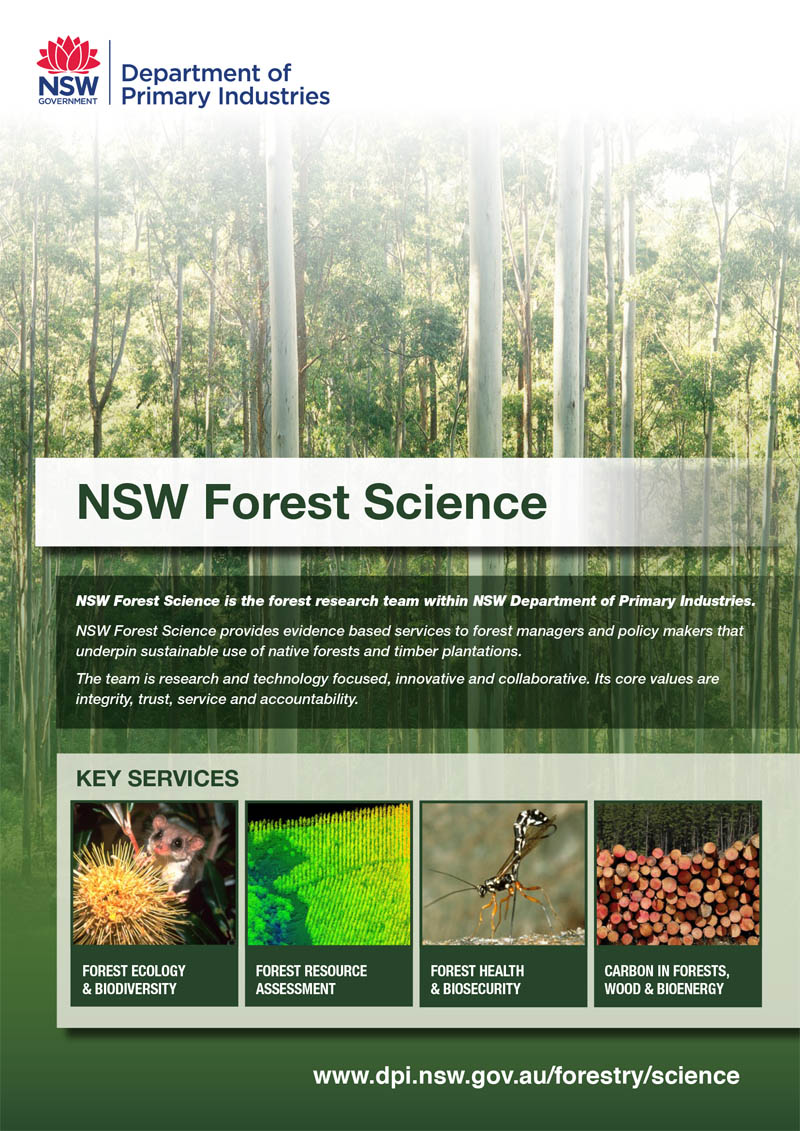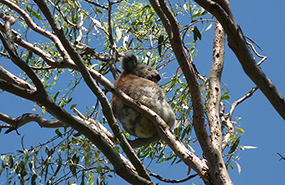As COVID restrictions relaxed, with support from the Commonwealth Homebuilder program, residential construction surged and trade disruptions caused timber shortages locally.
- Output is expected to dip to $524 million. Down 3% yoy.
- Salvage harvesting led to higher log production volumes in 2019-20.
- Extensive replanting programs by Forestry Corporation of NSW are underway.
Production
![Source: [[9FCNSW, 2021c0]]](https://www.dpi.nsw.gov.au/__data/assets/image/0006/1365576/forestry-image.png)
Hardwood production was down significantly to 894,000 cubic metres, a 31% decline over the previous year. This decline was particularly in native forests as there was a greater focus on recovery of forest health, biodiversity, and flora and fauna. 112 Sawlog production from hardwood plantations increased 162% over 2018-19 to offset the decline in sawlogs from native forests.
In the softwood sector, sawlog production increased 16% over 2018-19 to 3.2 million cubic metres, and pulplog production increased 8% to 2.4 million cubic metres. Salvage operations harvested 2.4 million tonnes by the end of 2019-20. Radiata pine, the main softwood in NSW, needs to be salvaged within 12 months of a fire otherwise it will deteriorate.
Plantations
Updated plantation data has not yet been published. As at 1 January 2019, NSW had 393,200 hectares of commercial plantations, comprising of 306,000 hectares of softwood species and 87,100 hectares of hardwood species.
Of the Forestry Corporation plantation area, 178,406 hectares was radiata pine, 11,918 hectares was Blackbutt, 3,318 hectares was Flooded gum, 3,162 hectares was Spotted gum.
Within NSW, Snowy Valleys local government area had the largest area of plantations, at 62,329 hectares, followed by Oberon (39,738 ha), Snowy Monaro Regional (26,815 ha), Greater Hume (14,153 ha) and Lithgow (9,776 ha). For hardwood plantations, Kyogle and Bellingen local government areas had the largest areas under management by Forestry Corporation of NSW, at 6,273 hectares and 5,927 hectares respectively.

Price
US Lumber Futures Prices
- Closing Price (Lumber Futures, $US per 1,000 Board Feet)
Average softwood prices rose due to increases in high quality sawlogs and cypress sawlogs. Ply and veneer logs had highest average prices in the softwood sector.
COVID Lumber futures in the US fell to a 5 year low early in the pandemic, then rallied in late 2020 as new home building and renovations caused a surge in demand for timber 59 , similar to the trend in Australia. Futures reached an all time high of US$1,670.5 per thousand board feet in May 2021, then fell to US$737.4 per thousand board feet by 30 June 2021 162 , still above pre-pandemic levels.
Trade
Due to confidentiality issues, there were $811.0 million in forestry exports that were not attributed to any state. This category was hardwood woodchips, though in 2018-19 NSW produced around 5% of Australia’s hardwood woodchips.
The largest imports by value to NSW were Builders’ Joinery and Carpentry of Wood ($163.3 million), Wood, Continuously Shaped ($141.6 million), and Plywood, Veneered Panels and Similar ($140.8 million). China, New Zealand and Indonesia were the largest trade partners with NSW.
While Australia and NSW are net exporters of unprocessed forestry products, they are net importers of wood products. NSW exported $128.6 million in wood products in 2019-20, accounting for just over 8% of Australia exports ($1.5 billion). These are primarily unprocessed or minimally-processed products like wood in the rough or sawnwood.
NSW imported $731.2 million in wood products in 2020-21, being the second-largest importer in Australia after Victoria ($907.0 million). Australian imports of wood products in 2020-21 were $2.4 billion.
Employment and Value Added
Industry value added (measured as production output less intermediate inputs) was estimated at $2.8 billion, a 5% decrease over the year. Industry value added for Australia was estimated at $8.7 billion, down 6% over the previous year.
Macroeconomic Conditions

With approvals for new houses up 20% and approvals for alterations and additions up 24%, there was a rush to sign contacts which saw the highest monthly total of approvals in March 2021 since 2018. The jump in building activity, bushfire-induced supply shift, and lower timber imports has led to a shortage of timber for construction.
There were trade disruptions relating back to COVID that affected the domestic timber industry by increasing lead times for key products. 119 World timber supply fell during 2020, then in the second half of the year there was a surge in residential construction and renovations in many countries. This supply-demand imbalance sent lumber futures to record levels in May 2021.
2019-20 Bushfires
Forestry Corporation has commenced its largest replanting program, including over 14 million pine seedlings to replant softwood plantations across the state and 1 million eucalypt seedlings across north coast NSW hardwood plantations.





